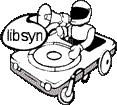Mon, 14 July 2014
The Second Vatican Council was the largest council of the Church, beginning under John XXIII in October 1962 and running for four sessions until 1965, ending on the Feast of the Immaculate Conception under Paul VI. It reaffirmed and proclaimed the timeless teaching of the Church, though it did not define much new doctrine, the pastoral thrust was very important. We must follow the instruction of all ecumenical councils, even a council that does not define doctrine. The interpretation of this council can be seen through the Catechism of the Catholic Church, which has many references to council documents. |
St. Irenaeus Ministries
Scripture Studies brought to you by the St. Irenaeus Center.
Categories
podcastsgeneral
Biblical Study
Christianity
Archives
AprilMarch
February
January
December
November
October
September
August
July
February
January
December
November
October
September
August
July
May
April
March
February
January
December
November
October
September
August
July
June
May
April
March
February
January
December
November
October
September
August
July
June
May
April
March
February
January
December
November
October
September
August
July
June
May
April
March
February
January
December
November
October
September
August
July
June
May
April
March
February
January
December
November
October
September
August
July
June
May
April
March
February
January
December
November
October
September
August
July
June
May
February
January
December
November
October
September
August
July
May
April
March
February
January
December
November
October
September
August
July
June
May
April
March
February
January
December
November
October
September
August
July
June
May
April
February
January
December
November
October
September
August
July
June
May
April
March
February
January
December
November
October
September
August
July
June
May
April
March
February
January
December
November
October
September
August
July
June
May
April
March
February
January
December
November
October
September
August
July
June
May
April
March
February
January
December
November
October
September
August
July
June
May
April
March
February
January
December
November
October
September
August
July
June
May
April
March
February
January
December
November
October
September
| S | M | T | W | T | F | S |
|---|---|---|---|---|---|---|
| 1 | 2 | 3 | 4 | 5 | ||
| 6 | 7 | 8 | 9 | 10 | 11 | 12 |
| 13 | 14 | 15 | 16 | 17 | 18 | 19 |
| 20 | 21 | 22 | 23 | 24 | 25 | 26 |
| 27 | 28 | 29 | 30 | 31 | ||
Syndication

